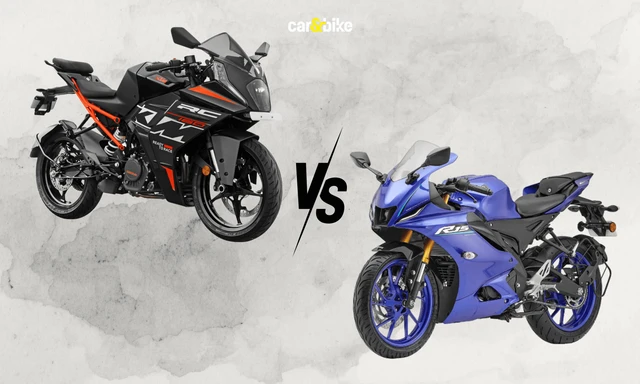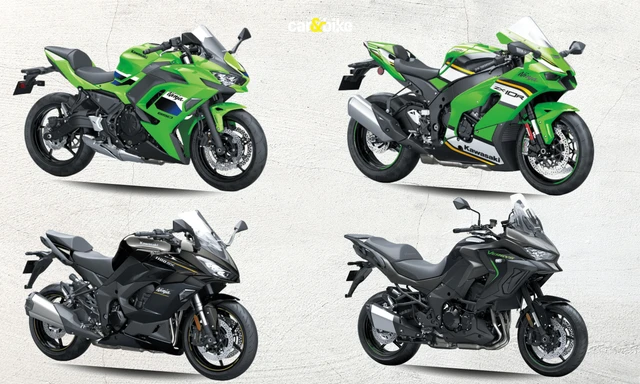F1 Car Aerodynamics Explained

Throughout the quest for speed and performance, an F1 brand's production plant never stops, working all year on all aspects of the vehicle, from the forward-facing wing to the diffuser, concocting progressively complex plans to lend an edge to racers.

Here is a brief look at the aerodynamics of F1 cars.
Goals of Aerodynamics

The essential point of streamlined features is to create downward power to push the wheels into the street firmly, so that the tires have superior grip. This implies quicker cornering speeds, neat slow-downs, and seamless increases in speed which eventually leads to quicker lap times.
An F1 vehicle needs to work in various conditions, and it is certainly not an ideal situation. The streamlined features need to give a reliable and unsurprising measure of downward power consistently and that too without abrupt changes and amidst multifarious conditions. This involves a lot of investigation and calculation through complex technological programs.
Functions of F1 Car Parts
The Front Wing
It is one of the main pieces of an F1 vehicle. As the initial segment of the car comes into connection with the approaching wind stream, when the car hits the track, the wing in front is crucial for the vehicle's streamlined performance.
An all-around and well-planned forward-facing wing will work on the comprehensive design attributes of a vehicle - however, assuming that an entity misses the point, it should attempt to recoup whatever it can with the remainder of the vehicle.
Even though the wing in front needs to take downward power of its own, additionally, it needs to balance the current around the front tires. Assuming it figures out how to perform that, the remainder of the vehicle can benefit immensely, further benefiting various parts like the diffuser and the floor.
The Back Wing
The DRS (drag decrease framework) is the gadget that permits part of the back wing to expose off straight.
Whenever actuated, the framework lifts the leading edge of the wing by seventy millimetres to make a bigger opening hole - and decreases the front-facing region of the vehicle. This implies that the car has little drag, giving a lift to the maximum velocity.
The framework includes an actuator mounted on the wing and a linkage. It further lifts the back wing up or down in a split second.
The sidepods
They significantly influence bundling the vehicle as firmly as expected, lodging the radiators, limiting drag and manifolds minimally. The principal radiator gulfs are situated on one or the other end of the vehicle and should take in sufficient air to give adequate cooling to the unit. Without enough cooling, the motor and its different parts are at risk of overheating and more.

The channels must be painstakingly intended to be productive at cooling while staying as little as could be expected and should likewise be situated smartly too.
The Diffuser
This part of F1 Cars is the opening that is exploded at the back of the floor. It is the piece of the vehicle liable for creating the most incredible downward power from the basement of the car.
Wind current is fast-tracked below the floor where it makes a low-pressure region, producing downward power as the high-pressure air on the vehicle top pushes it down.
When the diffuser opens up, the current further speeds up, leading to a minor strain below the floor. The current is then brought into the opening of the diffuser, extending to create a zone of progress from the quick under-floor speed to the encompassing rate of the vehicle.
The Suspension
Suspension configuration has progressed neatly in recent years, and all throughout F1 history. It is the connection between the wheels and the vehicle, directing how it responds to the street and to the car driver's bits of feedback.
F1 constructors are permitted up to nearly six primary individuals for each wheel on an F1 vehicle for a pit-stop. The suspension setup generally has two double-fold wishbones, the pull-pole or the push-pole and a directing arm or track pole, if it is either the back or the front suspension.
Latest News
 Jaiveer Mehra | Jan 13, 2026Tata Punch Facelift Launched At Rs 5.59 Lakh; Gets Turbo-Petrol Engine OptionUpdated micro SUV gets revised styling, new features and a new turbo-petrol powertrain option.1 min read
Jaiveer Mehra | Jan 13, 2026Tata Punch Facelift Launched At Rs 5.59 Lakh; Gets Turbo-Petrol Engine OptionUpdated micro SUV gets revised styling, new features and a new turbo-petrol powertrain option.1 min read car&bike Team | Jan 12, 2026Updated Royal Enfield Goan Classic 350 Launched: Gets Slip And Assist ClutchThe updated Goan Classic also gets a faster Type-C charging port.1 min read
car&bike Team | Jan 12, 2026Updated Royal Enfield Goan Classic 350 Launched: Gets Slip And Assist ClutchThe updated Goan Classic also gets a faster Type-C charging port.1 min read Jaiveer Mehra | Jan 12, 2026Tata Punch Facelift Launch Tomorrow: What To ExpectUpdated internal combustion Punch gets a design in line with its larger siblings as well as a new engine option.3 mins read
Jaiveer Mehra | Jan 12, 2026Tata Punch Facelift Launch Tomorrow: What To ExpectUpdated internal combustion Punch gets a design in line with its larger siblings as well as a new engine option.3 mins read Jafar Rizvi | Jan 9, 2026KTM RC 160 vs Yamaha R15: Specifications, Features, Prices ComparedKTM’s new RC 160 goes head-to-head with the Yamaha R15 in the entry-level sportbike category. Here is how the two fare on paper.1 min read
Jafar Rizvi | Jan 9, 2026KTM RC 160 vs Yamaha R15: Specifications, Features, Prices ComparedKTM’s new RC 160 goes head-to-head with the Yamaha R15 in the entry-level sportbike category. Here is how the two fare on paper.1 min read Amaan Ahmed | Jan 9, 2026Suzuki E-Access Launched At Rs 1.88 Lakh; LFP Battery Promises 95 KM RangeOriginally confirmed for a June 2025 launch, Suzuki's first electric two-wheeler for India has finally arrived almost a year after making its global debut at Auto Expo 2025.3 mins read
Amaan Ahmed | Jan 9, 2026Suzuki E-Access Launched At Rs 1.88 Lakh; LFP Battery Promises 95 KM RangeOriginally confirmed for a June 2025 launch, Suzuki's first electric two-wheeler for India has finally arrived almost a year after making its global debut at Auto Expo 2025.3 mins read car&bike Team | Jan 9, 2026Kawasaki Ninja, Versys Models Offered With Discounts Of Up To Rs 2.50 LakhThe Ninja ZX-10R is offered with maximum benefits, followed by the Ninja 1100SX and Versys 1100.1 min read
car&bike Team | Jan 9, 2026Kawasaki Ninja, Versys Models Offered With Discounts Of Up To Rs 2.50 LakhThe Ninja ZX-10R is offered with maximum benefits, followed by the Ninja 1100SX and Versys 1100.1 min read
 Bilal Firfiray | Jan 9, 2026Toyota Urban Cruiser Hyryder: 10,000 km Long-Term ReviewAfter spending over three months and 10,000 km with the Toyota Urban Cruiser Hyryder Hybrid, we were impressed by its real-world mileage, seamless hybrid, practical comfort, and Toyota reliability. Is it the best C-SUV then?5 mins read
Bilal Firfiray | Jan 9, 2026Toyota Urban Cruiser Hyryder: 10,000 km Long-Term ReviewAfter spending over three months and 10,000 km with the Toyota Urban Cruiser Hyryder Hybrid, we were impressed by its real-world mileage, seamless hybrid, practical comfort, and Toyota reliability. Is it the best C-SUV then?5 mins read Seshan Vijayraghvan | Jan 8, 20262026 Mahindra XUV 7XO Review: Big On Tech, Bigger On ComfortThe new Mahindra XUV 7XO is flashier, feature packed, and comes with more advanced tech. But are the changes just incremental or actually substantial?1 min read
Seshan Vijayraghvan | Jan 8, 20262026 Mahindra XUV 7XO Review: Big On Tech, Bigger On ComfortThe new Mahindra XUV 7XO is flashier, feature packed, and comes with more advanced tech. But are the changes just incremental or actually substantial?1 min read Preetam Bora | Jan 10, 2026Simple One Gen 2 First Ride Review: 265 km Claimed Range!The Gen 2 model of Simple Energy’s first electric scooter gets a fair few updates, including new features, tech, more range and lighter weight. We spent a couple of hours with the Simple One Gen 2 to find out if it manages to impress.6 mins read
Preetam Bora | Jan 10, 2026Simple One Gen 2 First Ride Review: 265 km Claimed Range!The Gen 2 model of Simple Energy’s first electric scooter gets a fair few updates, including new features, tech, more range and lighter weight. We spent a couple of hours with the Simple One Gen 2 to find out if it manages to impress.6 mins read Amaan Ahmed | Jan 3, 2026VLF Mobster 135 300 KM Review: Fun But FlawedA 125 cc scooter with Italian design and Chinese genes is a rare combination, and while some may be tempted to dismiss it because of its origins, the VLF Mobster shows 125s can also be exciting – but not without compromises.11 mins read
Amaan Ahmed | Jan 3, 2026VLF Mobster 135 300 KM Review: Fun But FlawedA 125 cc scooter with Italian design and Chinese genes is a rare combination, and while some may be tempted to dismiss it because of its origins, the VLF Mobster shows 125s can also be exciting – but not without compromises.11 mins read Preetam Bora | Dec 30, 2025TVS Orbiter Review: Real-World Performance and Range TestedThe TVS Orbiter is a promising electric scooter promising decent range, practicality and pricing. But is there any reason to avoid it? We spent a few days getting to know it better.9 mins read
Preetam Bora | Dec 30, 2025TVS Orbiter Review: Real-World Performance and Range TestedThe TVS Orbiter is a promising electric scooter promising decent range, practicality and pricing. But is there any reason to avoid it? We spent a few days getting to know it better.9 mins read





















































































































